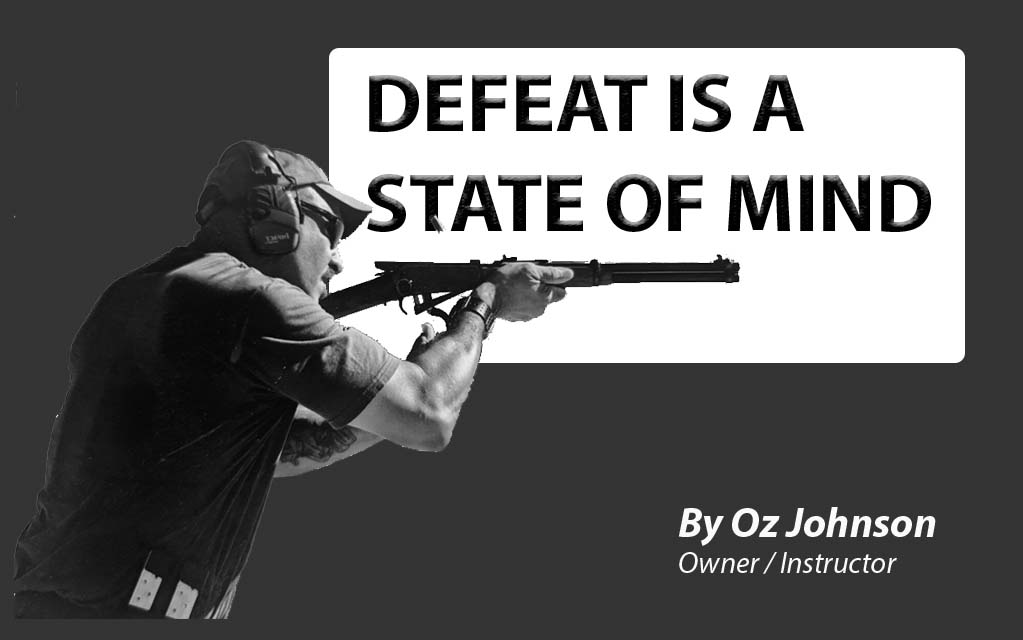Why Scan and Assess is so important.
There are so many critical situations and incidents that can mess with your brain, or other parts of your body. When the body gets overloaded with adrenaline during stressful situations, the normal relaxed way of thought can go right out the window.
There are many intentional activities that can minimize your body from reacting poorly during stress. I talk about Scan and Assess during firearms classes, and I make it an important part of my training. Also known as check left, check right, and check behind, this drill accomplishes more than just stretching the neck. This simple movement when done on the range during practice begins your process of calming down. Once you’ve dealt with that stressful, adrenaline dumping self-defense scenario, you need to deescalate not only your surroundings but also your mental state. “You need to calm down.”
Scan and Assess is something you see people do on the range. Usually, it’s that person who’s wearing a full camouflage outfit and carrying the coolest military style firearms. But why are they doing it in the first place, and is it really necessary? Most people would say that scanning the area after a critical incident is solely for the purpose to make sure no other threats are in your vicinity. Though this is true, it’s not solely for that reason.
When I scan and assess I am checking for several things, but when I begin the looking around movement it also begins a mental process that works drastically in my favor. As soon as I’ve determined that my initial threat has been stopped, my scan begins the widening of the tunnel vision I might have incurred during the incident.
During extreme stress, certain parts of your eye (thalamus) filter out what it considers to be non-critical sensory input, which may include filtering out visual input other than the information from the eye’s high-resolution part (fovea). That means that our visual input might be reduced to no more than a few degrees (which equates to about a 12-inch circle at 20 feet) but the input that is processed, can be extremely high resolution. Kind of like looking through the cardboard paper towel tube at something 21 feet away, except the tube has a high-resolution lens in it.
So, looking around and paying attention to other areas and objects begins the widening of the tunnel vision. Not to mention the Auditory Exclusion (diminished sound) and slow-motion time that might occur during your extreme stress. Get out of the picture frame you just encountered and start coming back to normal. This will allow you to get a feel for your surroundings again. There might be other things you need to do.
After your incident, you need to observe and decide on many things. Are there still other threats, are there other people who might need your help or are willing to help you, do you need to vacate the area and find cover or escape? Not to mention, you probably still have a firearm in your hand. You need to get out of that extreme stress scenario and back into your “ODALOOP.” (Observe, Decide, Act, on a continuous loop).
So, hopefully you’ll never think of that Scan and Assess technique as a cool tactical thing advanced shooters do. It’s so much more because it’s the beginning process of getting you out of that possible panic stage because you just used deadly force. Don’t rush to think that the incident is over, it might not be. Even if all threats are dealt with, you could still be the only one standing in a public place holding a firearm. Don’t let your guard down.
Introduce Scan and Assess into your firearms training, but when you do, try to see things that are around you. When your done you should be able to say, “There was a male subject with a yellow jacket at my 5 o’clock, or “The biggest lizard I’ve ever seen just ran from my 3 o’clock to my 6”. Actually, look around, don’t just do the movement. Paying attention to those details will quickly open up your vision and get you out of that state of panic, excitement, and tunnel vision. Force your body and brain into normal mode.
Never Stop Training.
If you would like a checklist for “Your 7 Rules for the Justified Use of Force” please let us know.
For any questions regarding my article, email me at
JohnsonGroupTAC@gmail.com
Oz Johnson/Lead Instructor, NRA Certified
JohnsonGroupTAC.com
602-410-7355
TRAINING ADVISORY
Concealed Carry Permit Training planned at Ben Avery Shooting Facility
Public encouraged to learn Firearms Laws
Cave Creek – Johnson Group Tactical will offer Concealed Carry Permit Training on Saturday, MARCH 8th from 11:00 am – 2:30 PM for people interested in securing a Concealed Carry Weapon (CCW) Permit. The class, which costs $79, will be held in the DPS Classroom at Ben Avery Shooting Facility, which is located at 4044 W. Black Canyon Blvd, Phoenix. Discounts are available for military and first responders. The class does not include the $60 application fee to AZ DPS for the final permit.
Johnson Group Tactical is a veteran-owned firearms training company headquartered in Arizona. Oz Johnson, a veteran, and an NRA instructor spent 10 years in the military and 20 years in law enforcement with the Maricopa County Sheriff’s Office. Johnson also served on SWAT for seven years and is a former POST certified firearm, rifle and building clearing instructor. Johnson Group Tactical, a husband-and-wife team, has a special focus on women and new handgun owners. Classes range from beginner to advanced as well as concealed carry weapon (CCW). Johnson Group Tactical is a member and official partner of USCCA.
The business can be reached at JohnsonGroupTAC@gmail.com or by calling 602.410.7355. J-G-T.com





